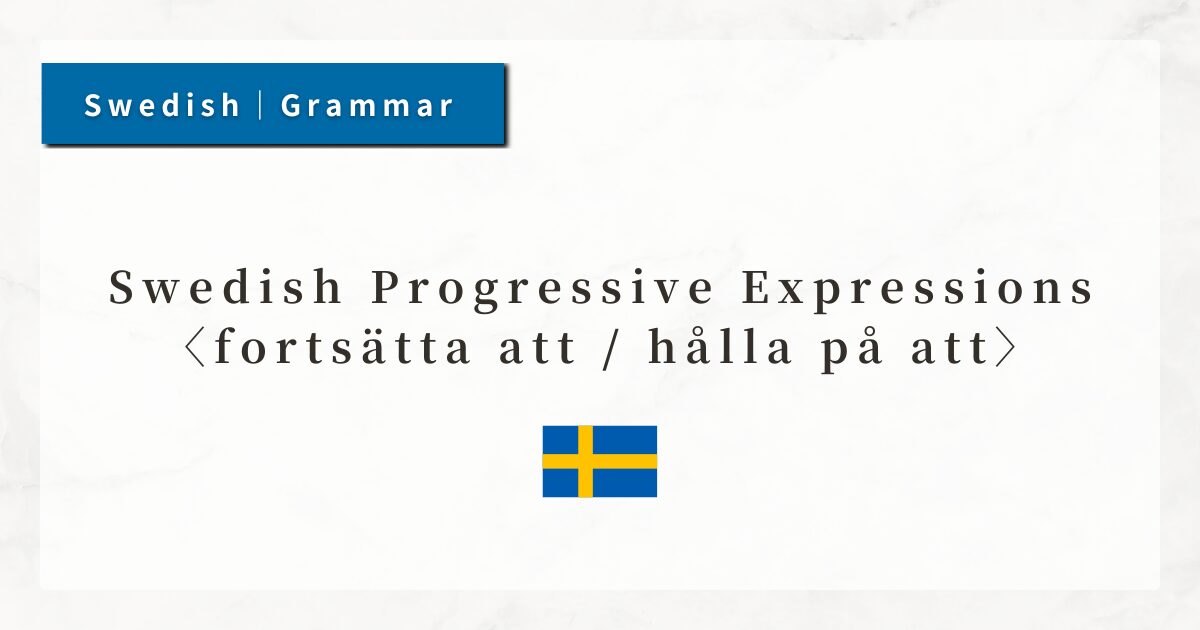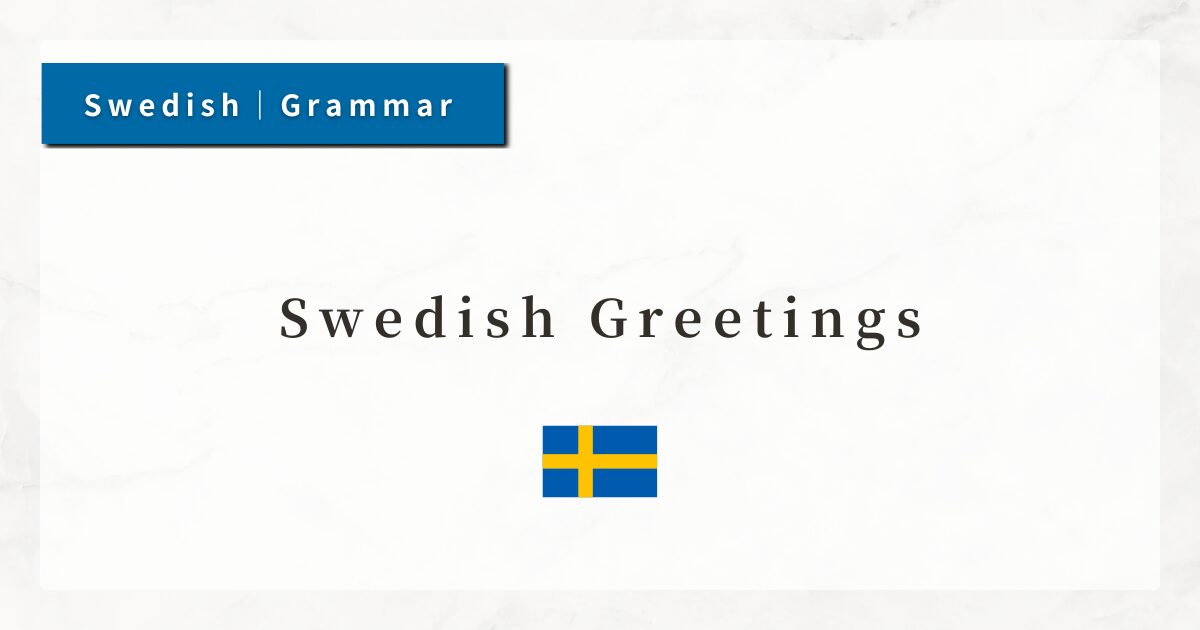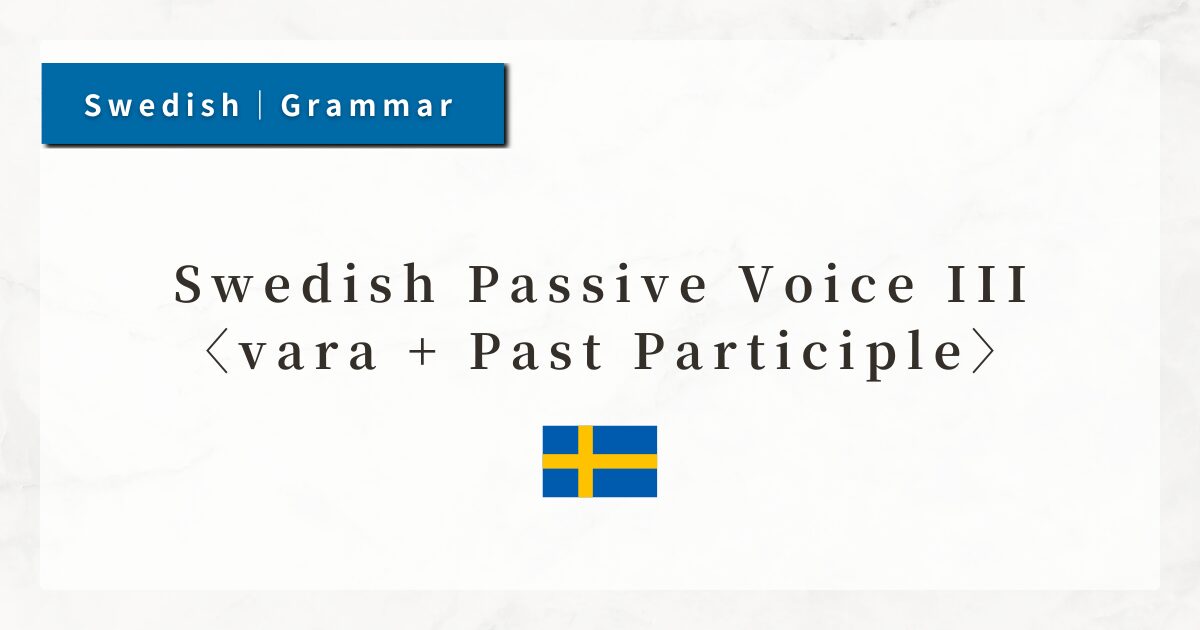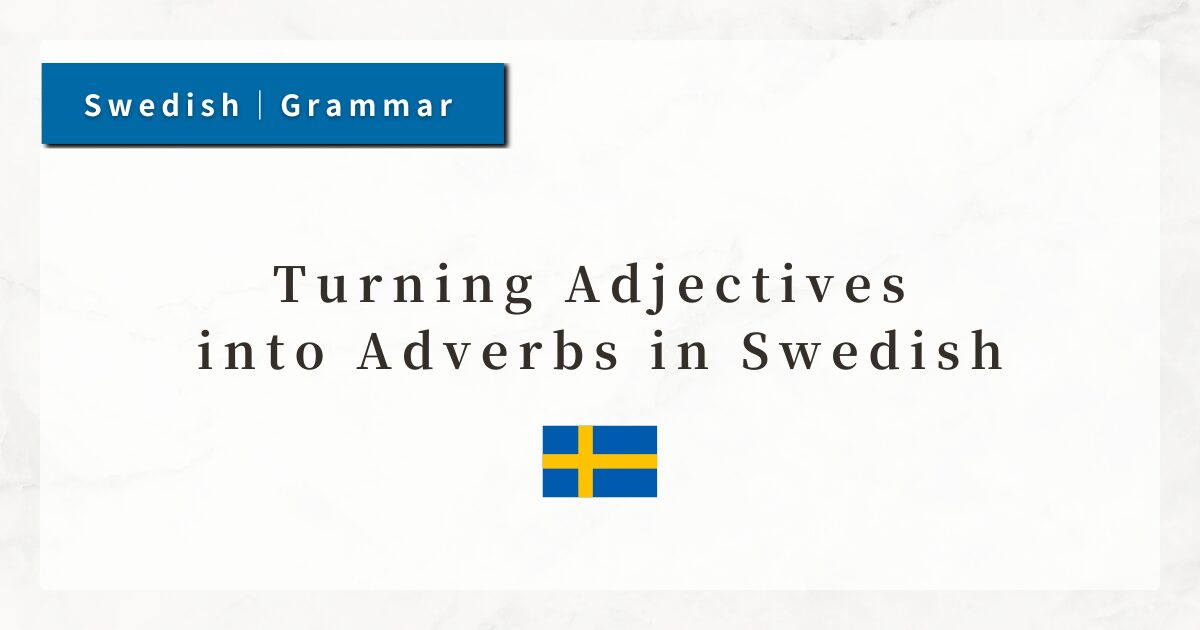#1 Swedish Word Order Rules|Basic Sentence Structures with Examples
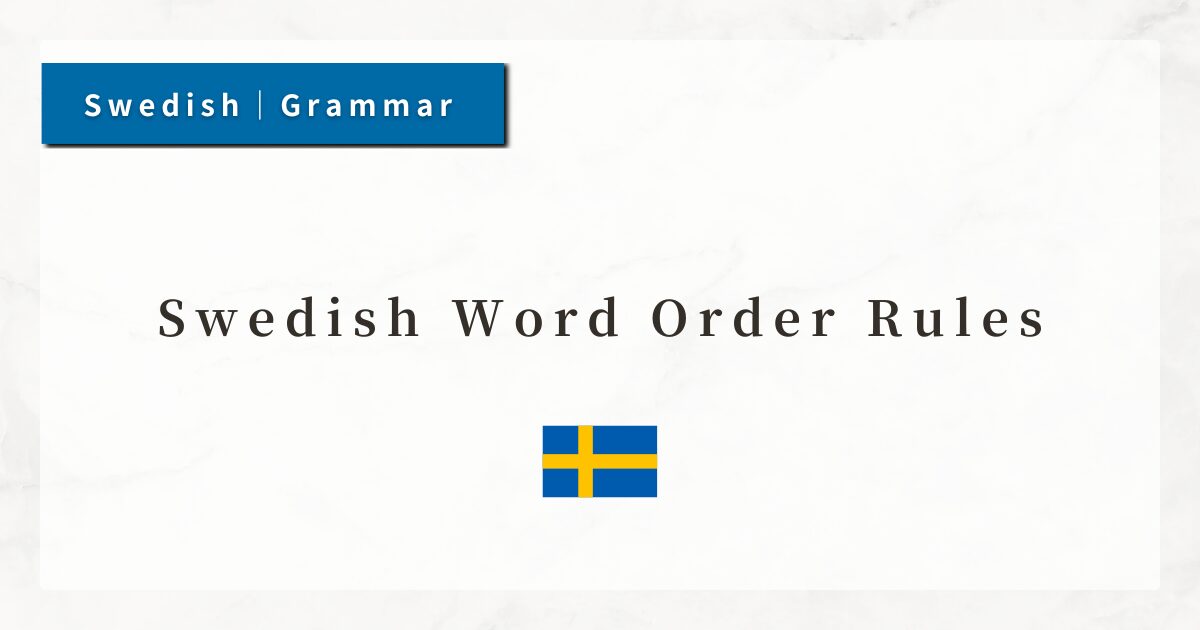
In Swedish, the basic word order follows the SVO pattern — Subject (S) + Verb (V) + Object/Other (O). However, Swedish has a distinctive rule in which the word order changes depending on what is placed at the beginning of the sentence.
One particularly important feature is known as the “V2 word order” rule. This rule states that the verb must always be in the second position in a sentence.
In this lesson, I will explain in detail the basic word order, inverted constructions, and common pitfalls that learners often face.
1. Basic Word Order in Swedish
The most fundamental grammatical structure in Swedish is SVO (Subject + Verb + Object).
As in English, word order determines “who,” “does what,” “to whom/what,” “where,” and “when,” making accuracy in word order extremely important.
1-1. Why is Word Order Important?
Unlike Japanese, Swedish does not use particles (such as が, を, に) to indicate grammatical roles.
Therefore, if the word order changes, the meaning of the sentence changes as well.
For example:
- Katten jagar musen.
(The cat chases the mouse.) - Musen jagar katten.
(The mouse chases the cat.)
Although the words are the same, changing the order reverses the subject and object, completely altering the meaning.
1-2. Basic Sentence Structure
A typical SVO sentence looks like this:
- Jag skriver ett brev.
(I write a letter.)
→ Subject (Jag) + Verb (skriver) + Object (ett brev) - Hon studerar svenska.
(She studies Swedish.)
→ Subject (Hon) + Verb (studerar) + Object (svenska)
In Swedish, the subject normally comes immediately before the verb.
2. Verb Must Be in the Second Position
In Swedish, the verb always occupies the second position in a sentence.
This is known as the V2 word order, a characteristic also found in German.
This means that when an element other than the subject (such as an adverb, time expression, or place) comes first, the order of the subject and verb is reversed.
| Sentence-initial element | Word order | Example | Translation |
|---|---|---|---|
| Subject (normal) | S + V + O | Jag läser en bok. | I am reading a book. |
| Adverb (inversion) | Adv + V + S + O | Idag läser jag en bok. | Today, I am reading a book. |
| Time expression | Time + V + S + O | I morgon kommer han hem. | Tomorrow, he will come home. |
3. Common Word Order Patterns and Examples
In Swedish, only one element is placed at the beginning of a sentence; other information is moved to later positions.
Basic order (SVO)
- Vi spelar fotboll.
(We play football.) - Hon bor i Stockholm.
(She lives in Stockholm.)
Time or adverb first (inversion)
- I morgon kommer han.
(Tomorrow, he will come.) - Snart börjar filmen.
(The movie will start soon.)
In English, sentence structures are categorized into five patterns (S+V, S+V+O, etc.).
Swedish has no such numbered patterns, but its structures are similar to English ones, such as SVO, SVC, SVOO, and SVOC.
In Swedish, sentences are understood based on the number of elements a verb requires, the word order, and the types of complements or objects.
4. Nuances Created by Word Order
Word order affects not only grammatical correctness but also sentence focus.
- Jag såg filmen igår.
(I saw the movie yesterday.)
→ Focus on the subject - Igår såg jag filmen.
(Yesterday I saw the movie.)
→ Emphasis on “yesterday” - Filmen såg jag igår.
(It was the movie that I saw yesterday.)
→ Emphasis on “the movie”
By placing important information at the start, you shift the focus, changing the listener’s perception.
5. Summary
- The basic order is Subject + Verb + Object (SVO).
- The verb must always be in the second position (V2 rule).
- Changing the word order changes the focus and meaning of the sentence.
- Only one element may come before the verb; if it is not the subject, the verb moves before the subject.

